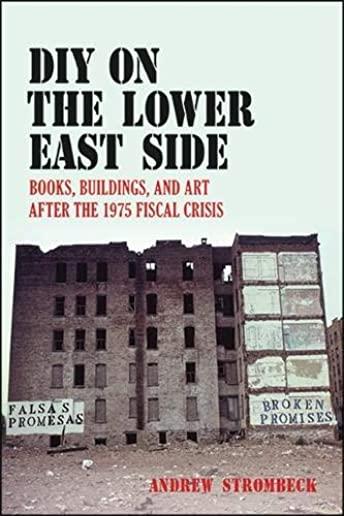
Strombeck, Andrew
product information
description
5The severe financial austerity imposed on New York City during the 1975 fiscal crisis resulted in a city falling apart. Broken windows, crumbling walls, and piles of bricks were everywhere. While, for many, this physical decay was a sign that the postwar welfare state had failed, for others, it represented a site of risky opportunity that could stimulate novel forms of creativity and community. In this book, Andrew Strombeck explores the legacy of this crisis for the city's literature and art, focusing on one neighborhood where changes were acutely felt--the Lower East Side. In what became a paradigmatic example of gentrification, the Lower East Side's population shifted from working-class people to Wall Street traders and ad agents. This transformation occurred, in part, because of high-profile local artists such as Jean-Michel Basquiat, Keith Haring, Jeff Koons, and Kiki Smith, but Strombeck argues that neighborhood writers also played a role. Drawing on archival research and original author interviews, he examines the innovative work of Kathy Acker, David Wojnarowicz, Miguel Pi ero, Sylv re Lotringer, Lynne Tillman, and others and concludes that these writers still have much to teach us about changes in the nature of work and the emergence of a do-it-yourself ethos. DIY on the Lower East Side shows how place and politics shaped literature, and how New York City policies adopted at the time continue to shape our world.
member goods
No member items were found under this heading.
listens & views

TRANCE HEAVEN PRESENTS SOCCER TRANCE ...
by TRANCE HEAVEN PRESENTS SOCCER TRANCE / VAR
COMPACT DISCout of stock
$18.99
Return Policy
All sales are final
Shipping
No special shipping considerations available.
Shipping fees determined at checkout.






